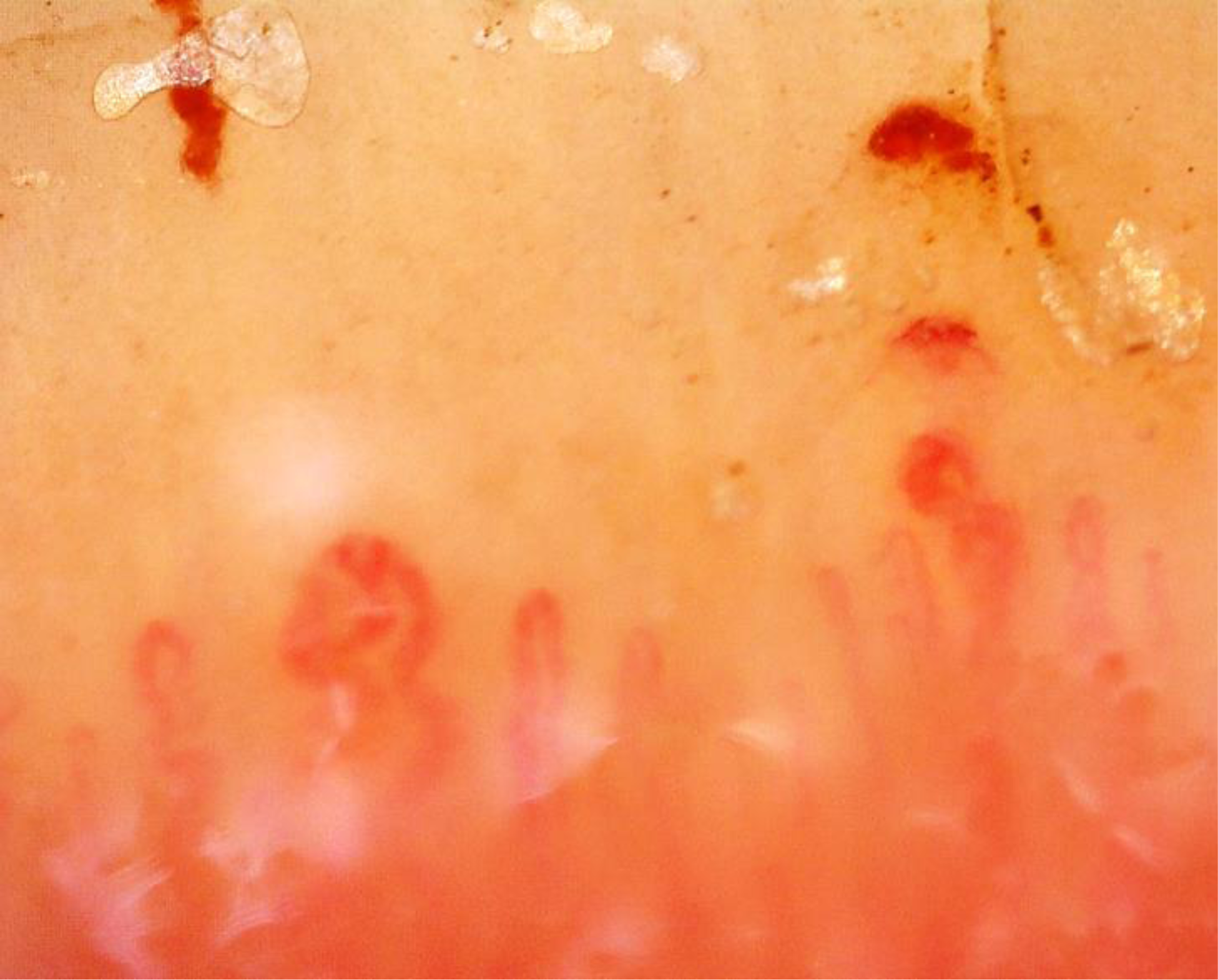

Background: Increased prevalence of peripheral vascular symptoms like Raynaud’s phenomenon (RP) and acrocyanosis is reported in anorexia nervosa (AN) and correlates with a more severe malnutrition. Limited data on a possible association with microcirculation damage in this context are published.
Objectives: To characterize the microcirculation characteristics of anorexia nervosa patients through nailfold video capillaroscopy (NVC).
Methods: Consecutive female patients with AN undergoing NVC due to RP and no known rheumatic disease were recruited. Controls (HC) were recruited among female subjects with a body mass index (BMI) >20 kg/m 2 undergoing screening NVC due to RP and no concomitant rheumatic disease (primary RP). NVC was performed in each patient (digits II to V bilaterally). Two images taken at the center of each nailfold were evaluated by a single examiner to assess the presence of the following major microcirculation features: giant capillaries (defined by a diffuse >50 micrometers enlargement of a capillary loop), neoangiogenesis (bushy or deranged vessels), empty dermal papillae, hemosiderin deposits (dark deposits above capillaries suggestive of microhemorrages), microthromboses (cap-like hemosiderin deposits). Minimum and mean capillary density was registered. NEMO score was calculated as the cumulative number of hemosiderin deposits in all the examined digits. ANA (anti-nuclear antibodies) and ENA (anti extractible nuclear antigen antibodies) determination was available for all the recruited subjects. The following laboratory values related to nutritional status were collected for AN patients: hemoglobin, platelets, glucose, triglycerides, albumin, total serum proteins, urate, total, HDL and LDL cholesterol, folate, vitamin D, vitamin B12, prolactin, FSH, LH, complement C3 and C4. Weight and height were measured to calculate BMI.
Results: Forty-seven AN patients with a mean age 25.5 ± 9.1 years and all with a BMI lower than 18.5 kg/m 2 , and 17 HC with a mean age 33.2 ± 10.5 years of were recruited. All the recruited subjects were negative for ANA and ENA. Compared to healthy controls, AN patients showed a significantly higher frequency of any of the considered capillaroscopic alterations (p=0.007) and in particular of empty dermal papillae (p=0.04). Among the considered laboratory values, HDL cholesterol level inversely correlated (point-biserial coefficient) with the presence of empty dermal papillae (p=0.032, R 2 =-0.476) and directly correlated (Pearson) with the mean capillary density (p=0.030, R 2 =0.396).
Conclusion: We described the presence of microcirculation alterations in patients with anorexia nervosa without concomitant rheumatic diseases or autoantibody positivity. Microcirculation alterations and in particular the presence of empty dermal papillae, resembling a connective tissue disease NVC specific pattern, suggest the presence of a microcirculation damage in more than 30% of AN patients with RP. Among nutritional markers, HDL cholesterol, classically considered a protective cardiovascular factor, seems to correlate inversely with the microcirculation damage detected. This observation might provide a clue to investigate from a mechanistic point of view the relationship between AN, RP, and microcirculation damage.
REFERENCES: NIL.
Table 1.

Capillaroscopy of a 22 years old female with anorexia nervosa and Raynaud’s phenomenon.

Acknowledgements: NIL.
Disclosure of Interests: None declared.